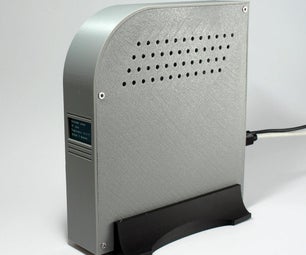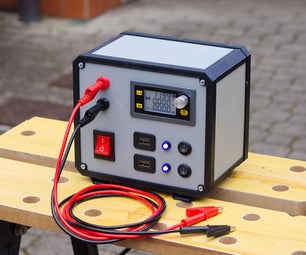Introduction: Rasperberry PiPhone Silver Edition
This was a collaboration for a special topics course at Washington State University Vancouver. The course was titled DTC 338 - Maker Culture and this was the final project. The creators of this beast are Alan McGinnis and Steven Schmeling.
WARNING, WARNING, WARNING: This project is costly, requires electrical skills, is a time suck, and uses technology that is on its way out.
This project was based off of the PiPhone by David Hunt which can be found here on the Adafruit website. Overall this project follows the tutorial step by step. Notes will be made when different steps were taken. Download the PDF of David Hunt's tutorial.
Step 1: Order All of the Parts
Bill of materials:
Raspberry Pi 2 - Model B - ARMv7 with 1G RAM- $40
SD/MicroSD Memory Card (4 GB SDHC) - $8
PiTFT 2.8" TFT 320x240 + Capacitive Touchscreen - Raspberry Pi Model B - $45
PowerBoost 500 Basic - 5V USB Boost @ 500mA from 1.8V+ - $10
Lithium Ion Polymer Battery - 3.7v 1200mAh - $12.50
Adafruit FONA - Mini Cellular GSM Breakout - SMA Version - v1 - $45
Mini GSM/Cellular Quad-Band Antenna - 2dBi SMA Plug - $5
Prepaid SIM Card - $25
Wires- >$5
Total w/o shipping: ~ $195
Optional:
Headphones with Microphone
Iphone 2S (silver edition) case- $50
Step 2: Setup Your Pi
To start out the project go ahead and connect the touch screen to the Pi. Once that is done download and install the image provided by the Adafruit tutorial. Click here for the image.
Notes: The touch screen for this project was ordered pre-assembled. It would be best to order the version that requires assembly. You will also need third party software to install the image from Adafruit. This project used Pi Filler. If at first you do not have success with the screen working right away try re installing the image.
Step 3: Rotate the Touch Screen
This part was a little confusing at first but ended up being an easy fix.The tutorial says that you need to change a line of code by accessing the adafruit.conf file located at:
sudo nano /etc/modprobe.d/adafruit.conf
For this project that file was somehow missing but the same effect can be achieved by accessing:
sudo nano /boot/config.txt and changing the same line of code.
Step 4: Tell the Pi You Rotated the Screen
The next step is to tell the Raspberry Pi that you have rotated the screen. There are many methods for doing this, but the one that worked the best for this project was to run the auto-magical script provided by Adafruit. Run the script by inputing sudo adafruit-pitft-touch-cal into the cmd line. This should auto detect the rotation of the screen. If it does not auto detect, try one of the other methods found here. If this is not working the buttons for the phone will be offset and you will not be able to make a phone call, so make sure that this is setup properly.
Step 5: Install the PiPhone Library
Install the software that will run the phone interface and allow you to make phone calls. When extracting the zip file, the instructions say to extract the zip by typing unzip PiPhone-master.zip. The correct command should be unzip master.zip.
Step 6: Wire It All Up
This can be fairly complicated. The instructions on the tutorial are pretty straight forward. This step is where having a unassembled screen is helpful. Once de-soldered, the connections can easily be made.
Step 7: Activate Your SIM Card
The tutorial says that you need a MINI SIM card. The one labled at the store said that it was a Standard/Micro SIM card and it fit just fine. A best guess is that MINI and Standard are the same. Now that you have a phone number you should be able to put it in the FONA and detect network access. If you can not immediately make a call, you may have to wait up to two hours before the SIM card is activated.
Step 8: Enjoy Your Pricey PiPhone
Self explanatory!
Step 9: Optional: Make a Case
3D print a case, or make one out of cardboard!









